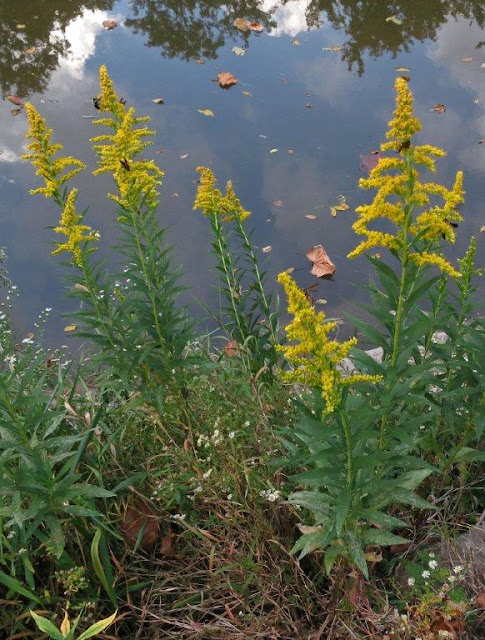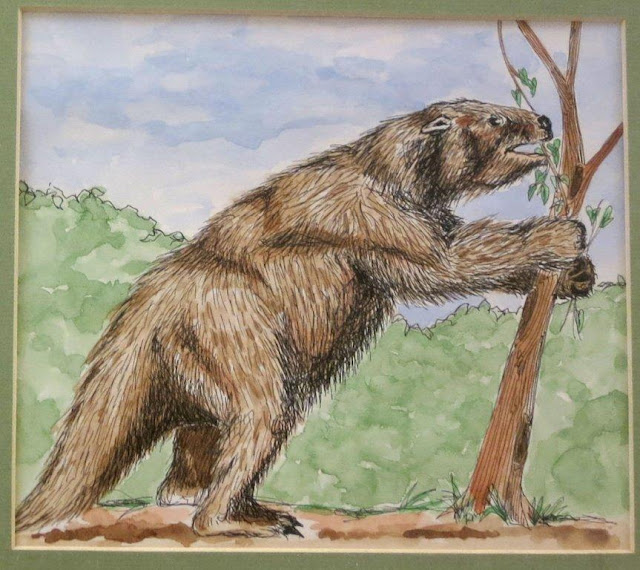Here is a Black Gum (Nyssa sylvatica) that added a bit of spicy October color to the green canopy.
Gradually the dominant oaks and hickories are giving way
to maples and beech. The American Beech (Fagus grandifolia) is a magnificent tree and I've never
seen so many huge ones. It is one of my favorites partly because it is so easy to
identify, thanks to its smooth bark:
Since trees grow in height from the top, Aaron and Marie
have only become wider in the past 11 years (they are not alone), and will
remain at eye level for the life of the tree.
Beech leaves are simple, slightly toothed, and alternate along the
twig. The characteristic sharply pointed buds make winter identification very
easy.
I really like the way young beeches retain their leaves into the winter, giving a delicate accent to a view through a forest:
The beech’s seeds are contained in these prickly husks. Each husk has seeds which fit neatly together until the husk dries, opens, and releases the edible seeds or beechnuts.
Fall color can be quite striking:
The beech’s seeds are contained in these prickly husks. Each husk has seeds which fit neatly together until the husk dries, opens, and releases the edible seeds or beechnuts.
Apparently beechnuts have little to do with Beech-Nut gum or baby food. The company was named for the beech trees that grew near the town in New York where it was founded, but the "nut" part comes from the nutty-flavored hams that were its first product.
One of the coolest things about beech trees are the Beechdrops (Epifagus virginiana) that often grow beneath them. These small plants produce no chlorophyll,
gaining all their nutrition from the roots of American Beech, thus qualifying
as parasites. Without the trees they could not survive.
The Johnson Woods beeches supported the greatest Beechdrop
density and largest individual plants that I have ever seen.
Parasitic plants have modified roots that penetrate the host's vascular tissue, but how does the seed of a parasitic plant know that it is near its host, and how do the developing roots find the host plant? Apparently the host plant exudes chemical signals that are recognized by the seed and that stimulate germination. The developing plant's roots then follow a chemical concentration gradient toward the host. Pretty amazing.
I have a feeling that I'll be repeating that phrase often in this blog. It is fascinating to consider that despite the fact that plants are immobile, they are able to successfully reproduce, protect themselves, get nutrition, and grow. There is a whole lot going on in the plant world, and we probably don't have a clue about much of it.
Something else to ponder: what are the chances that T.S. still loves L.M.?








































